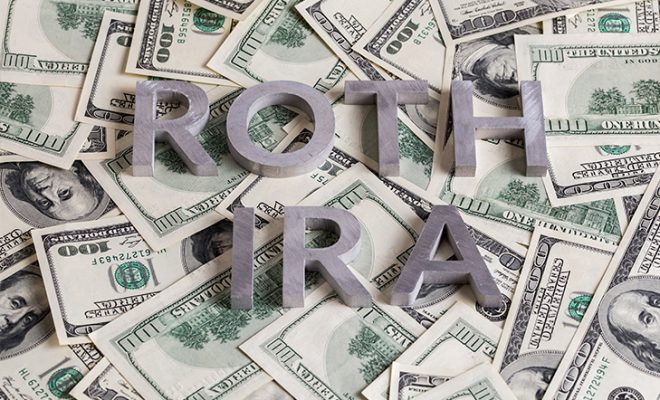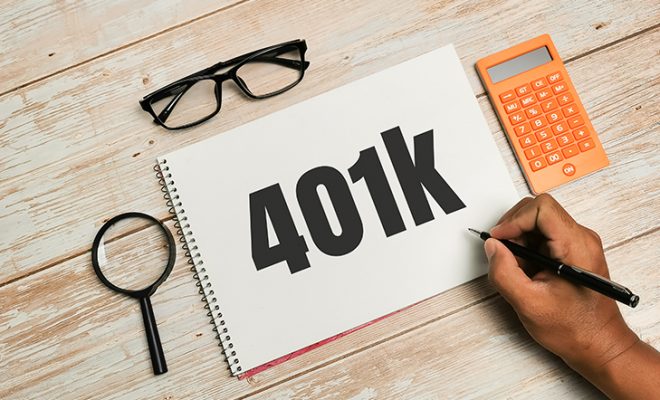How to Boost Your 401(k) Contributions if You are a High Earner?

The 401(k) has long been hailed as a powerful tool for securing a comfortable retirement. It can offer tax advantages and a structured approach to savings. While being a high earner provides a distinct advantage, the onus to navigate the complexities of financial planning and secure your future is on you. Merely having a substantial income does not guarantee a secure retirement. Instead, it is how that income is managed and invested that shapes your financial future. Failure to save strategically can jeopardize your retirement security even with a high income. Boosting your 401(k) contributions as a high earner can be a smart strategy to maximize your retirement savings and take advantage of tax benefits.
A financial advisor can offer helpful 401(k) contribution tips for high earners and help you understand how to maximize your savings. This article will explore strategies for retirement planning for high-income individuals so you can leverage your superior financial position to build a substantial retirement nest egg.
Below are five tips for maximizing 401(k) savings if you are a high earner:
Tip 1: Maximize your contribution limits
The first tip for boosting your 401(k) contributions as a high earner is to maximize the contribution limits set by the Internal Revenue Service (IRS). Maximizing your 401(k) contributions is a fundamental step towards securing a robust retirement plan. As a high earner, it is crucial to ensure that you are taking full advantage of the contribution limits. In 2024, employees participating in 401(k) plans can contribute up to $23,000 in pretax or post-tax contributions. This cap extends to $69,000 for both employee and employer contributions. For those aged 50 and older, there is an additional catch-up contribution allowance of $7,500. This means the maximum contribution limit reaches $30,500 with catch-up contributions and elevates the overall limit to an impressive $76,500 with employee and employer contributions.
One of the most effective high-earner 401(k) strategies to maximize your contributions is to set up automatic contributions to your account. By automating the process, a predetermined portion of your income is seamlessly directed towards your retirement savings before you have the chance to allocate it elsewhere. This helps ensure that you are consistent with your contributions. Budgeting plays a pivotal role in this strategy. Carefully analyzing your monthly income and expenses can help you identify areas where adjustments can be made to accommodate higher 401(k) contributions. Creating a detailed budget allows you to allocate a specific portion of your earnings towards your retirement savings goal and ensures that you are consistently working towards maximizing your contributions, year after year. Moreover, consider prioritizing contributing to your 401(k) account before allocating funds to other financial goals or discretionary spending. Making your retirement savings a non-negotiable part of your budget helps you prioritize long-term financial security over short-term expenses. Over time, this disciplined approach enables you to build a substantial nest egg for your retirement.
Some employers may also offer matching contributions that can help you further maximize your contributions. Under matching contributions, your company matches a percentage of your contribution and invests it into your 401(k) investments. Maximizing your contributions ensures that you receive the highest possible match. This not only accelerates the growth of your retirement savings but also serves as a powerful tool for wealth accumulation. However, not all companies offer this. Therefore, you must talk to your employer to understand their matching contributions and strive to capitalize on this potential by contributing a significant portion of your income. Some employers may match dollar-for-dollar up to a certain percentage of your salary, while others may have tiered matching structures. Employers often provide different types of matches in their 401(k) plans, each catering to varying degrees of employee participation. The first is the non-elective match, which offers a 3% contribution to all employees, irrespective of whether they contribute to their own plans. Next is the basic match, which is characterized by a dollar-for-dollar match on the initial 3% of an employee’s compensation and 50 cents on the dollar match for the subsequent 2%. The third option is known as the enhanced match, where the employer matches 100% of the first 4% of an employee’s contribution. It is advisable to consult your company’s HR department or review the plan documentation to know which of these you qualify for. This information can help you create a suitable plan of action.
Tip 2: Use catch-up contributions
The later years of your career bring not only a wealth of experience but also an invaluable opportunity to boost your retirement savings through catch-up contributions. As highlighted earlier, individuals aged 50 and older can contribute an additional $7,500 per annum. If you find yourself in this age bracket, you must seize the opportunity to enhance your financial security in retirement. Taking advantage of catch-up contributions allows you to fortify your nest egg during the critical years leading up to the transition into a post-career life. With the inclusion of catch-up contributions, the maximum annual contribution limit for your 401(k) escalates to $30,500. This increased contribution provides a unique advantage for those in their 50s or beyond to accelerate retirement savings and bridge any potential gaps in their financial plan. Moreover, the benefits of catch-up limits go beyond your personal contributions. Not only do you bolster your own retirement savings, but you also gain a higher employer match.
You are more likely to earn more in the later years of your career due to having higher experience and career advancements. This can be an opportune time to align your financial strategy with catch-up contributions to leverage your increased income to make substantial contributions to your 401(k). This helps you maximize the impact on your retirement savings.
Tip 3: Consider a backdoor Roth Individual Retirement Account (IRA)
A backdoor Roth IRA can be ideal in retirement planning for high-income individuals. This involves converting your funds to a Roth IRA for tax-free growth. For individuals in the higher income brackets, traditional avenues of retirement savings may come with limitations, such as income restrictions for direct contributions to Roth IRAs. The backdoor Roth IRA presents an alternative to leverage after-tax contributions made to a 401(k) and subsequently convert them to a Roth IRA.
Ideally, an IRA has income limits that may prohibit high-income earners from contributing to the account. The backdoor Roth IRA strategy is ideal for high-income earners who find themselves excluded from the direct benefits of a Roth IRA due to income limits. This legal strategy allows you to convert your traditional 401(k) to a Roth IRA, thereby gaining access to the unique advantages of tax-free growth and withdrawals that a Roth IRA offers. This process involves transferring your funds from a traditional 401(k) to a Roth IRA. However, unlike a traditional 401(k), which allows pretax contributions and tax-deferred growth, the Roth IRA operates on an after-tax basis. You can consider an annual in-plan rollover to maximize the benefits of the backdoor Roth IRA. This strategic move ensures that your after-tax contributions are promptly converted to a Roth IRA, allowing for continuous tax-free growth on your investment returns.
It is important to note that the backdoor Roth IRA strategy is not a tax evasion tactic. In fact, it may result in higher taxes during the year it is done. However, converting your after-tax dollars to a Roth IRA enables your retirement savings to grow tax-free. This can be a considerable advantage in the long run. The benefits of the backdoor Roth IRA strategy are twofold. First and foremost, it enables high-income earners to navigate around the income limits that typically restrict direct contributions to Roth IRAs. Secondly, the backdoor Roth IRA strategy is a forward-thinking approach to tax planning. While the conversion may incur immediate tax liabilities, the future tax savings of a Roth account often outweigh the upfront costs. Roth IRAs offer the advantage of tax-free withdrawals during retirement. They provide you with a source of income that is not subject to taxation, unlike traditional accounts, where your withdrawals are taxed as ordinary income.
This strategy is particularly advantageous for people who expect to be in a higher tax bracket during retirement or for those who want to diversify their portfolio on the basis of tax. By paying taxes on the converted amount now, you create a tax-free income stream for your post-retirement years when you may have a lower taxable income. Having said that, it is important to take this step after thorough evaluation and analysis. You must understand your current tax situation and present and future income and consider any potential changes in tax laws.
SPONSORED WISERADVISOR
Tip 4: Regularly review and adjust your 401(k) plan
One of the most helpful yet neglected high-earner 401(k) strategies is to review your plan regularly. Periodically assessing your financial situation, goals, and contributions helps ensure your retirement plan remains aligned with your evolving circumstances. Financial landscapes are dynamic. They can be influenced by changes in income, expenses, and the performance of your investments. Therefore, a static approach to retirement planning may not be effective in capturing evolving opportunities or challenges. Regularly reviewing your financial situation lets you stay attuned to fluctuations and make informed adjustments.
Contribution limits for retirement accounts tend to increase annually. For example, the contribution limits for a traditional 401(k) witnessed an increase from $22,500 in 2023 to $23,000 in 2024. Staying informed about these adjustments allows you to capitalize on the opportunity to contribute more towards your retirement savings. If contribution limits rise, you can consider increasing your contributions in tandem to make the most of the new thresholds. This proactive approach ensures that you are maximizing the benefits of your retirement accounts and staying ahead of the curve in terms of building a robust nest egg. You will also likely receive bonuses and increments as you get ahead in your career. Reviewing your 401(k) plan every year enables you to factor in these increases in your contributions. You can build in automatic increases to your retirement contributions. For example, if you anticipate a raise in your base salary, take the initiative to adjust your investments ahead of that increase. Say your employer plans to offer a 3% raise. In this case, you can consider increasing your contribution rate by a corresponding percentage in the same year. Many retirement plans offer the flexibility to automate this process by allowing you to set up a system where your contribution rate automatically increases at the beginning of each year. This gradual approach can be easier to implement. Moreover, it can be particularly beneficial for individuals who may be hesitant to make substantial changes to their budget all at once.
It is important to note that regularly reviewing and adjusting your retirement strategy is not just about reacting to changes. It is about staying ahead of them. Life is dynamic, and your financial plan should reflect that dynamism. This ultimately helps you build a retirement plan that is resilient and responsive to your evolving needs.
Tip 5: Consult with a financial advisor
A financial advisor is a knowledgeable expert who can offer you a personalized approach to retirement planning for high-income individuals. Therefore, you must consider consulting with a financial advisor who specializes in retirement planning. Navigating the intricacies of retirement savings, tax strategies, and investment decisions can be complex. Implementing the tips mentioned above effectively requires a comprehensive understanding of your unique financial situation, goals, and the ever-changing landscape of tax laws and retirement regulations. A skilled financial advisor can provide personalized advice tailored to your individual needs and can guide you through the process of maximizing your contribution limits. This involves a detailed assessment of your income, expenses, and long-term financial goals. They can help you create a customized plan that aligns with your capacity to contribute and optimizes the tax advantages offered by a 401(k). Additionally, a financial advisor can assess your eligibility for catch-up contributions, calculate the optimal amount to contribute, and integrate this strategy into your overall retirement plan.
For instance, while a powerful tool, the backdoor Roth IRA strategy also demands a nuanced understanding of tax implications and strategic timing. A financial advisor with expertise in retirement planning can guide you through this process, help you assess whether this strategy aligns with your financial goals, and advise you on the optimal timing for a conversion. A financial advisor can also assist in developing a systematic approach to reviewing your 401(k) plan and strategy. They can ensure that your plan remains in sync with changes in income, expenses, and investment performance. This proactive approach can help you stay on track towards your retirement goals.
Consulting with a financial advisor goes beyond mere technical advice. It involves a holistic evaluation of your financial well-being, considering your risk tolerance, investment preferences, and long-term aspirations. This customized approach ensures that the strategies implemented align not only with your financial objectives but also with your values and comfort level. Moreover, a financial advisor can provide clarity and reassurance during periods of economic uncertainty. They can help you navigate market volatility or adjust your retirement plan in response to life changes.
To conclude
High earners face a unique set of challenges and opportunities when it comes to setting up a financially secure retirement. While a high income is undoubtedly an advantage, it is crucial to recognize that true financial security in retirement requires strategic planning and a tactful approach to wealth management. The five tips discussed above can offer effective results for maximizing 401(k) contributions and ensure you make the most of your earning potential. These strategies are not a one-size-fits-all approach but can be tailored to your unique financial situation and long-term goals.
In addition to the highlighted tips, it can also help to further diversify your retirement savings by exploring alternative avenues. You can coordinate your retirement strategies with your spouse, especially when there is a significant income disparity between a couple. If you are married, and your spouse has a lower income or is not contributing to an employer-sponsored retirement plan, you can contribute your share of the income to a spousal IRA. This can be another effective way to maximize your overall contributions and create a comprehensive financial plan.
Use WiserAdvisor’s free advisor match service to connect with experienced financial advisors who can help you navigate the intricacies of contribution limits, investment strategies, and tax implications to ensure that your investment approach aligns with your goals and maximizes the benefits available. All you have to do is answer a few simple questions based on your financial needs, and the match tool can help connect you with 2 to 3 advisors best suited to meet your financial requirements.











